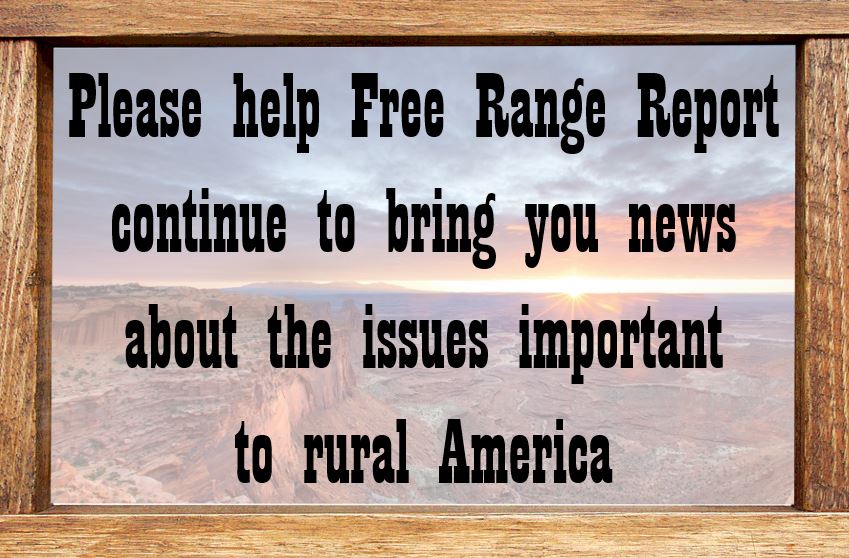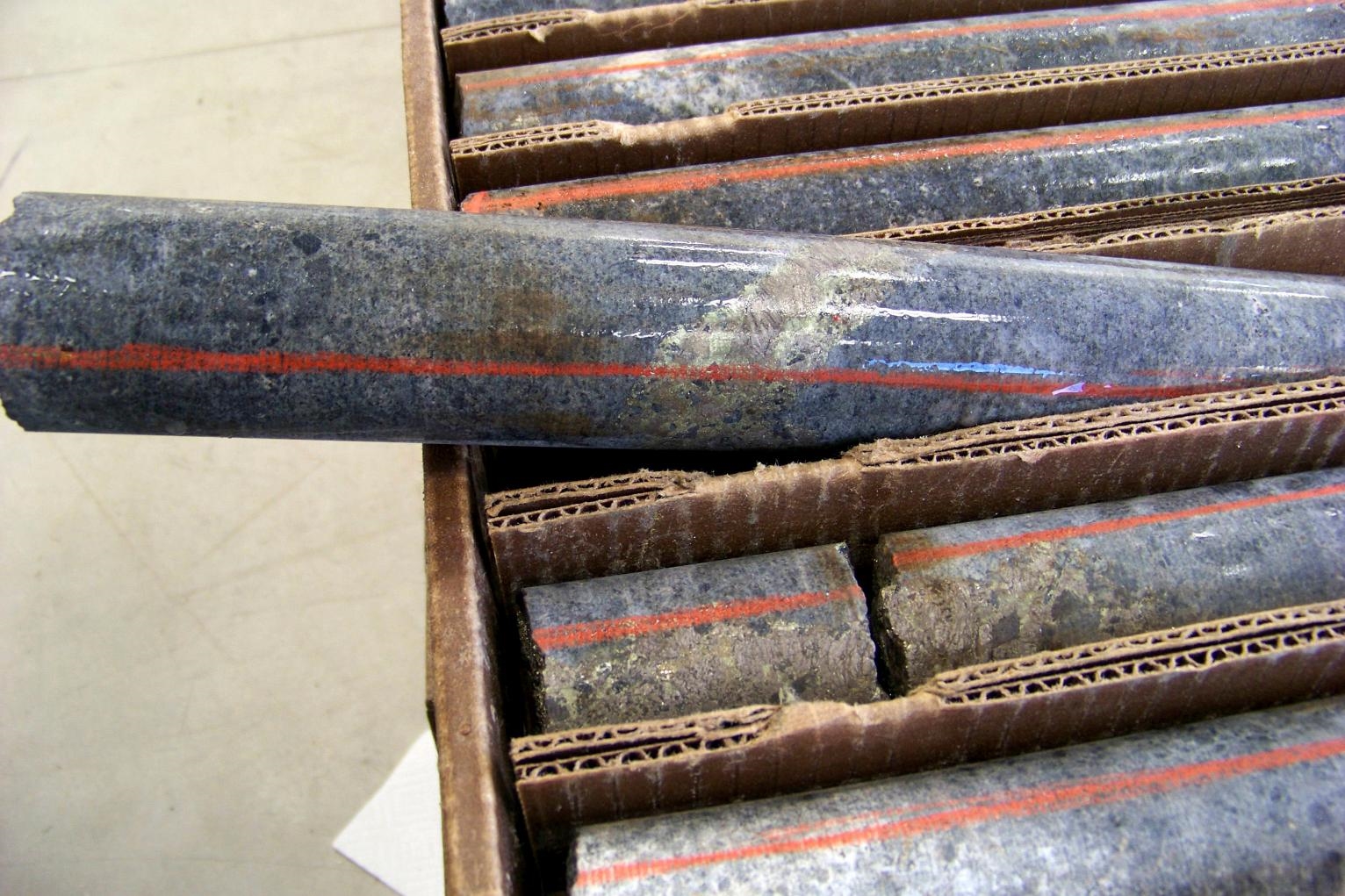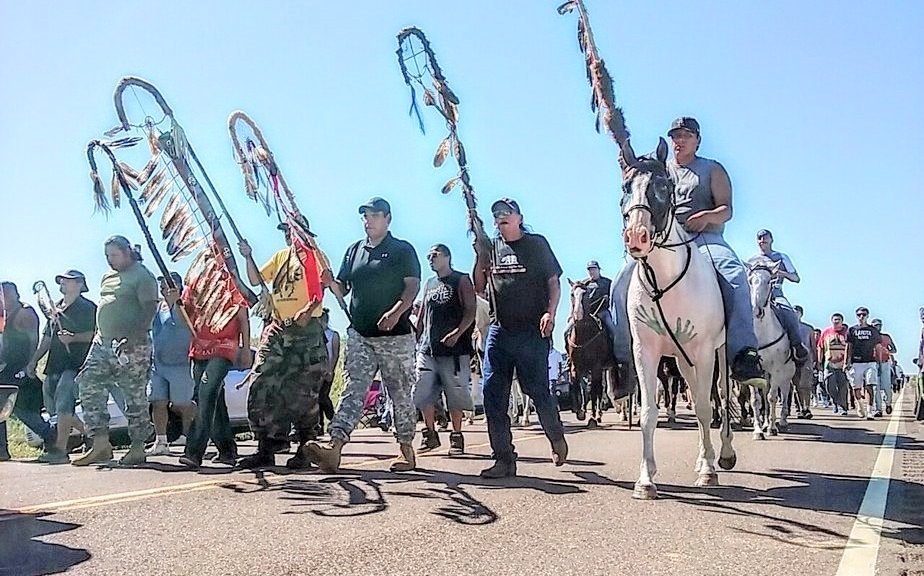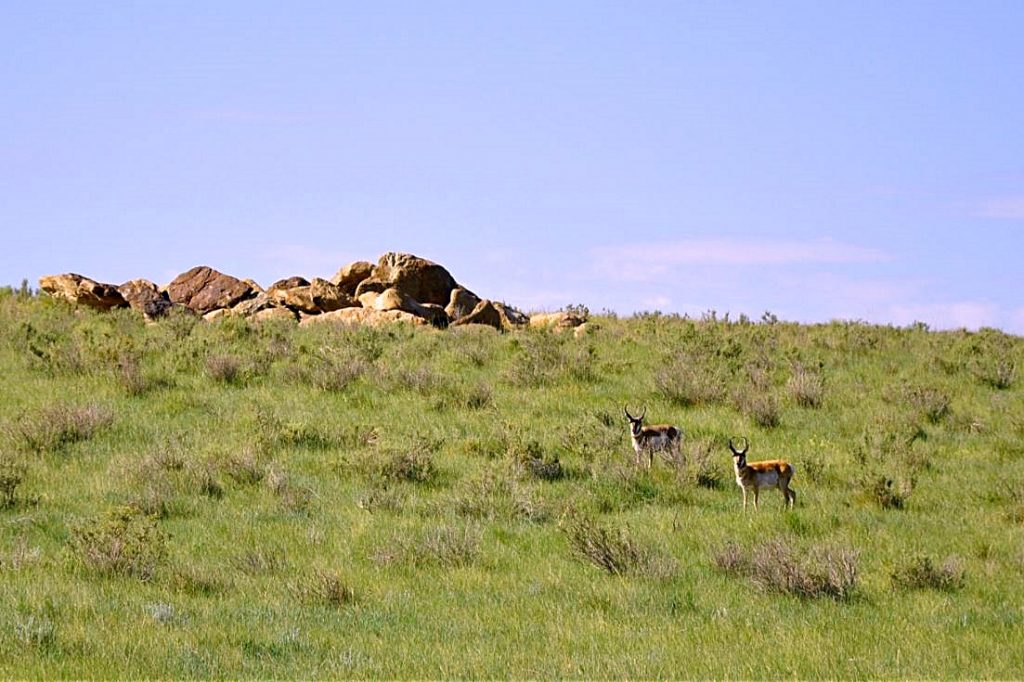
[paypal_donation_button]
Included in the federal land withdrawal are 95,000 acres of School Trust Lands that generate revenue for all Minnesota schools. With over two decades of copper-nickel mining, revenue to the School Trust Fund is projected to be more than $3 billion.
Nancy Gornik McReady
Save our Communities
This is about saving our communities, our schools and our hospitals around the Boundary Waters. There have been concerted efforts by extreme preservation groups that are harming our communities, our state and our country.
As President of Conservationists with Common Sense, CWCS has informed our members about the 86,000 acres of School Trust Lands in the Boundary Waters.
School Trust Lands generate revenue for all Minnesota schools with the state managing the land. The state does this with leases for gravel and other mining, leases for hunting and trapping, timber sales, and other means.
In the 1990s there were discussions with state legislators to resolve the issue of these lands that have not been able to generate revenue for the School Trust since 1964.
At that time, the discussion was to exchange School Trust Lands for federal lands outside of the Boundary Waters, or to put the land up for sale at public auction according to state statute. School Trust Land cannot be sold outright.
There was no resolution back then as environmental groups did not want to see private citizens possibly submitting the highest bid for land in the Boundary Waters.
In 2010, the Minnesota Legislature’s Permanent School Trust Fund Advisory Committee appointed a working group to develop a plan to address the School Trust Lands in the Boundary Waters. CWCS was never asked to be a part of this group, but members of the Friends of the Boundary Waters were. This working group came up with a hybrid plan to exchange 30,000 acres and purchase 56,000 acres.
The group ignored the 1964 Wilderness Act, which states:
STATE AND PRIVATE LANDS WITHIN WILDERNESS AREAS
SECTION 5. (a) In any case where State-owned or privately owned land is completely surrounded by national forest lands within areas designated by this Act as wilderness, … such State-owned land or privately owned land shall be exchanged for federally owned land in the same State of approximately equal value
In 2012, Governor Dayton signed a bill to expedite the exchange of School Trust Lands in the Boundary Waters for federally owned lands outside of the wilderness. Environmental groups were behind this legislation that would seek to have the lands condemned so they could then be purchased. Still no resolution.
In March of 2016, Governor Dayton denied Twin Metals access to state lands. The Bureau of Land Management then followed with denying renewal of federal mineral leases. Twin Metals is years away from a mine plan, but the rug was pulled out from Twin Metals to continue their exploration and has led to many lost jobs. The rules have been changed.
Last summer a new plan for the exchange of School Trust Lands in the Boundary Waters was devised by the Conservation Fund. I think this plan caught the DNR totally off guard. The plan was for the Conservation Fund to purchase Potlatch land and trade it for School Trust Lands in the Boundary Waters. Then have the Forest Service purchase the lands in the Boundary Waters from the Conservation Fund. There is no money appropriated from Congress for such a buyout. This plan was recently presented at a Tuesday group at the Grand Ely Lodge.
The most recent action taken by the Obama Administration, at the request of extreme preservation groups, was the withdrawal of over 400,000 acres of federal, state and county lands in the Superior National Forest from future mining and exploration. Were any of our State Senators or Representatives informed of this action?
Included in the federal land withdrawal are 95,000 acres of School Trust Lands that generate revenue for all Minnesota schools. With over two decades of copper-nickel mining, revenue to the School Trust Fund is projected to be more than $3 billion.
Minnesota used to have more than 8 million acres of School Trust Lands. Today, 2.5 million acres remain; more than 92 percent are in 10 northern Minnesota counties. School Trust Lands in other parts of the state were auctioned or sold according to state laws to support Minnesota schools.
The 1978 BWCA Wilderness Act designated 220,000 acres along the Echo Trail, Fernberg Trail and Gunflint Trail as a Mining Protection Area. As to lands outside of the Boundary Waters, mining is an allowable activity. The Forest Service Plan states: “exploration, development and producing mineral resources are conducted in an environmentally sound manner so that they may contribute to economic growth and national defense.”
CWCS has been involved in Boundary Waters issues that greatly affect our communities since 1989. For nearly thirty years we have been fighting to preserve access to the Boundary Waters, to preserve our tourism economy that includes motorboats in the Boundary Waters. CWCS has encouraged economic development and being environmentally and socially responsible. We also acknowledge a healthy environment includes clean air, water and soil. This is essential to present and future generations. But, a healthy community depends on good paying jobs and a stable population that supports our schools and hospitals.
The needs of local communities and all users can and must be balanced with the conservation of our environment. Common Sense is needed in addressing economic development for the betterment of all.
The fight over the truck portages led the Friends of the Boundary Waters to reveal their real intentions, and that is to remove every last motor out of the Boundary Waters even though legislation allows limited motor use in this wilderness. Such an action would further decline our tourism in communities around the Boundary Waters.
Back in the 1990s, Cliff Wold was an outfitter who fought with CWCS in keeping the Boundary Waters accessible for all. He had thousands of brochures printed with a Minnesota map to inform people of the intentions of extreme preservation groups.
People thought Cliff was crazy. With extreme preservationists embedded in many of our government agencies and with the thought of a 20-year moratorium against future mining that land withdrawal southern border could very well become the southern border of the Boundary Waters, to include the 400,000 acres.
The propaganda against copper/nickel mining put out by these preservation groups is nothing more than fear-mongering. All their false information is turning people away from the Boundary Waters who think the waters are already poisoned. Visitors to the Boundary Waters has been on a steady decline over the past ten years.
This anti-mining agenda is more than a Minnesota issue. Over the last year of the Obama Administration, similar proposals of land withdrawals have been made with the same 20-year moratorium against mining and exploration… In Oregon, Idaho, Montana, Wyoming, Utah, and Nevada. Over 10 million acres have been withdrawn out West from future mining. And recently the State Senate in Maine passed a ban on open pit mining.
CWCS and Up North Jobs have been working with Jobs for Minnesotans and Mining Minnesota. We Support Minnesota Mining keeps people informed by posting articles about mining on Facebook, and Minnesota Miners who has reached out to supporters of mining in the states out West. We have been sharing information and the need to send in comments to the Forest Service opposing the land withdrawals.
What is happening here in Northern Minnesota and all across the West is a matter of National Security. Along with the need for copper/nickel for our everyday devices, our Defense Department needs these minerals and metals for our national security. Currently China hold 95% of this minerals and the United States imports many of them.
We talk about thinking globally and acting locally. Where better to mine for copper/nickel than right here in Minnesota where we have strict pollution regulations and MSHA safety regulations? This certainly doesn’t hold true in countries such as Russia, China, South Africa and others, where their labor force is often children.
Tourism has always been a big part of our economy, but even that has decreased drastically over the past several years. People visiting the Boundary Waters are getting older, and younger people aren’t showing a great interest in canoeing, camping, fishing, etc.
Northern Minnesota needs good paying jobs, and mining jobs are some of the few in the area that provide a livable wage to raise families. We need more people moving into our communities with children for our schools. How much longer can Ely schools remain an Independent School District with fewer and fewer students?
Lastly, I’d like to tell you about this fish.
*This picture is of a Brook Trout from a higher sulfide pit near the Dunka Pit. This was from one of the last pits Reserve Mining Company blasted. When Reserve closed in 1986 the pit began to fill with water. In 1990 my husband was working for Cyprus Mining Company at the former Reserve property. One of the first jobs he had was to pump the water out of the pit. This took months to do.

Once the water level reached the bottom of the pit, it was discovered to be filled with Brook Trout. Workers netted barrels of these fish and transferred them to a lake on the property.
This picture was given to CWCS by a geologist. He wrote: In past years miners carried canaries with them into underground coal mines to monitor air quality. The small birds were quite sensitive and if the bird lived the air was safe. However, if it died, it was time to leave quickly.
Native brook trout can serve the same purpose, to judge the quality of surface waters in and from mine pits. They can be thought of as the “Canaries” for surface mine waters.
This 2# native male brook trout in full spawning colors was netted, from a flooded northeastern Minnesota mine pit adjacent to an abandoned waste rock blast containing heavy sulfide mineralization. The trout had apparently migrated into the flooded pit from a nearby river, or maybe dropped in the pit by a bird flying overhead. It thrived for several years to grow quite large despite the sulfides and metals leaching into the water from the waste rock blast.
The ‘Canary’ lived. So does the trout.
The propaganda being put out by preservation groups in regard to copper/nickel mining here in Minnesota is just that… propaganda against any economic development. Scare tactics to delay mining projects.
Without mining, what is going to generate revenue for the School Trust Fund for Minnesota schools?
Please send your comments opposing the land withdrawal to the Forest Service and BLM. Our communities, schools and hospitals depend on good paying jobs and access to these lands which include School Trust Lands. Thank you.
Nancy Gornik McReady, founder, Conservationists With Common Sense

Nancy McReady is President of CWCS – Conservationists with Common Sense, a 501c(3) non-profit educational organization established in 1989 to disseminate accurate information about public lands and environmental issues. Nancy is involved in her community and is secretary of the Ely Igloo Snowmobile Club, the 1st organization snowmobile club in the country. She also does some occasional writing for the Ely Echo.
[wp_ad_camp_1]
BACKGROUND: MINNESOTA SCHOOL TRUST LANDS
What are school trust lands?
Conservationists with Common Sense (CWCS) has done quite a bit of research on the exchange of School Trust Lands over the past several years. This issue is far more important than just to Minnesota. There have been U.S. House hearings with representatives testifying from Minnesota, Alaska, Arizona, Utah, Idaho, and others states have demanding exchange of these state-owned lands landlocked in wilderness areas with federal lands outside of the wildernesses. CWCS supports the full exchange of School Trust Lands in the Boundary Waters Canoe Area Wilderness (BWCAW). Our position has not changed over the years.
Here is information about the forming of School Trust Lands and laws governing them.
What are school trust lands? School Trusts Lands were granted by the United States to each state joining the union beginning with Ohio 1803 through Alaska in 1959. These lands were granted in trust for the support of public education. Initially, each state received one square mile in each six square mile township. As western states were added, the grants expanded to two sections per township. When Utah, Arizona, and New Mexico entered the union they were granted four sections per township.
The states gave up the right to tax federal lands in return for the granted lands. For the U.S. as a whole, 28.7 percent of all land is federal. But 88 percent of the federal lands in the contiguous 48 states is in eleven western states, compounding the difficulties of funding education in these states. Nationally, there are 45 million acres of school trust lands granted in state Enabling Acts for a single, explicitly stated purpose – to support public schools.
How does the land generate money? Leasing or selling the surface or minerals is how the land generates revenue. Payments are received through sales through public auction, leases, royalties and bonus payments. Land use varies state by state from grazing, agriculture, and timber to mining, commercial, and rights-of-way.
Minnesota has 2.5 million acres of School Trust Lands. More than 92 percent of remaining School Trust Land is located within ten northern Minnesota counties. These lands are administered the Minnesota DNR.
The Constitutional Convention of 1857 discussed the handling of school lands, and it was determined that if the lands were sold, it must be at public auction, the principal to be reserved forever, and the income from this Permanent School Fund to be distributed to school districts in proportion to the number of students enrolled.
Yes, many of Minnesota’s and other states’ School Trust Lands have been sold as allowed by their state’s constitution. BUT, where School Trust Lands were surrounded by designated wilderness with the passage of the 1964 Wilderness Act, the Act mandates that these state-owned lands be exchanged. There is no mention of purchase of these lands by our federal government.
STATE AND PRIVATE LANDS WITHIN WILDERNESS AREAS
SECTION 5. (a) In any case where State-owned or privately owned land is completely surrounded by national forest lands within areas designated by this Act as wilderness, such State or private owners shall be given such rights as may be necessary to assure adequate access to such State-owned or privately owned land by such State or private owner and their successors in interest, or the State-owned land or privately owned land shall be exchanged for federally owned land in the same State of approximately equal value under authorities available to the Secretary of Agriculture.
Minnesota has definitely not been assured adequate access to their State-owned land as stated in the 1964 Wilderness Act. The Act does address acquisition of private lands by purchase.
Acquisition. (c) Subject to the appropriation of funds by Congress, the Secretary of Agriculture is authorized to acquire privately owned land within the perimeter of any area designated by this Act as wilderness if (1) the owner concurs in such acquisition or (2) the acquisition is specifically authorized by Congress.
In 2010, the Minnesota Legislature’s Permanent School Trust Fund Advisory Committee appointed a working group to develop a plan to meet the land management goals of both the State and Forest Service regarding school trust lands in the BWCAW. The working group included interested stakeholders from education, environmental groups, timber industry, mining interests, and local government. CWCS was not invited to participate in this working group. Had we been invited, we would have informed the group of what the 1964 Wilderness Act states about state and private lands within wilderness areas.
In 2012, Minnesota Congressman Chip Craavack introduced his bill H.R. 5544-Minnesota Education Investment and Employment Act 2012 addressing the exchange of School Trust Lands in the Boundary Waters. Betsy Daub policy director the Friends of the Boundary Waters testified at the hearing for H.R. 5544 that her organization was a part of the working group that came up with the Forest Service’s proposal of a hybrid approach. This hybrid plan is to exchange one third of the School Trust Lands in the Boundary Waters and two thirds federally purchased. Daub testified that after a year of meetings, the working group produced a thoughtful list of candidates for a partial exchange.
H.R. 5544 passed in the U.S. House in 2012, but neither Minnesota Senators would introduce a companion bill in the Senate.
Numbers vary as to how many acres of School Trust Lands are in the Boundary Waters, from 83,000 acres to 93,000 acres. According to 2001 BWCAW inventory, 122,247 acres are in state ownership, both DNR-managed and county-managed. Of this, approximately 93,260 acres are Trust Fund lands.
Since the creation of the Boundary Waters Canoe Area Wilderness (BWCAW) in 1978 School Trust Lands have been landlocked inside the BWCAW. For more than 35 years, because of restrictions on land in the wilderness area, this land has not generated any revenue for Minnesota schools.
The Forest Service’s proposal is to exchange 30,000 acres of School Trust Lands landlocked in the Boundary Waters and purchase the rest – 56,295 acres. This was the result of the working group’s hybrid approach. The Forest Service says there will be no net loss of national forest lands within the Superior National Forest boundary as a result of the proposed land transfer. The land exchange will result in an increase of federal acres inside the BWCAW and a decrease in federal acres outside the BWCAW.
On the Friends of the Boundary Waters website they no longer support the hybrid approach and state they now oppose any exchange for federal lands outside of the Boundary Waters. They want all 86,000 acres to be purchased by the federal government. CWCS’s position has always been to exchange all 86,000 acres for equal value federal lands outside of the Boundary Waters; preferably for federal lands in the same counties the School Trust Lands are located.
In addition to the 1964 Wilderness Act’s mandate that state-owned lands surrounded by wilderness due to the passage of the Act be exchanged, Minnesota passed a similar law. S.F.1750 passed by Minnesota legislature and signed by Governor Dayton on April 27, 2012.
Sec. 4. [92.80] EXPEDITED EXCHANGE OF LAND WITHIN BOUNDARY WATERS CANOE AREA WILDERNESS FOR FEDERALLY OWNED LANDS.
Subdivision 1.
Purpose and scope.
(a) The purpose of this section is to expedite the exchange of a portion of the state-owned lands located within the Boundary Waters Canoe Area Wilderness. The state owns 116,559 acres of land within the wilderness area, 86,295 acres of which are school trust land.
(b) Exchange of school trust lands within the Boundary Waters Canoe Area Wilderness for federally owned lands located outside the wilderness area will preserve the spectacular wild areas while producing economic benefits for Minnesota’s public schools.
Private sale of surplus state-owned land in the Boundary Waters is mention in this 2012 law, but it would have to be condemned. Presently there is a bill in the Minnesota Senate calling for the condemnation of School Trust Lands but there has not been any bill passed.
CWCS is opposed to any such condemnation as this is not in the best interest for Minnesota or its schools. We see this as a last ditch effort by environmental groups – all fifteen of them that signed a letter last March to Minnesota legislators – to push for the condemnation of School Trust Lands. The main reason these groups want School Trust Lands condemned, rather than exchanged for federal lands outside of the Boundary Waters, is because they will not have as much influence on how the state manages these lands.
In 2013, an oversight hearing was held on School Trust Land ownership within federal conservation areas, and in 2014 Congressman Rob Bishop of Utah introduced H.R. 4901- Advancing Conservation and Education Act of 2014. H.R. 4901 Allows Alaska, Arizona, California, Colorado, Idaho, Montana, New Mexico, North Dakota, Oregon, South Dakota, Utah, Washington, or Wyoming (western states) to relinquish state land grant parcels wholly or primarily within federal conservation areas and to select, in exchange, unappropriated public land within the state. Defines “federal conservation areas” as lands within the outer boundaries of units of the National Park, National Wilderness Preservation, National Wildlife Refuge, or National Landscape Conservation Systems and certain designated lands within the National Forest System. Hearings were again held, and interesting to note, The Wilderness Society considers H.R. 4901 a win-win for public lands, the economy and public schools.
As you can see the issue of landlocked School Trust Lands in our nation’s wilderness and other conservation areas in states from the West to the Midwest has been before Congress many times.
The Forest Service and Minnesota’s DNR have identified 39,074.65 acres of federal lands outside of the Boundary Waters. It is now time to exchange them for 39,074.65 acres within the Boundary Waters. Minnesota and the Forest Service must follow laws mandating these exchanges, especially the Grand Daddy of all legislation, the 1964 Wilderness Act.
Bottom line, federal law – the 1964 Wilderness Act – trumps state law. States cannot change federal laws.
Lake County passed a resolution in support of the land exchange but opposes any purchase of land in the Forest Service’s hybrid approach.
The scoping comment period for the School Trust Land Exchange has been extended. Please submit comments by May 15, 2015.
Peter Taylor
Superior National Forest All Units
8901 Grand Ave Place, Duluth, MN, 55808
prtaylor@fs.fed.us
S.F.1750 passed by Minnesota legislature and signed by Governor Dayton on April 27, 2012.
https://www.revisor.mn.gov/laws/?id=236&year=2012&type=0
http://www.lcc.leg.mn/lpsfc/meetings/02232015/2015TrustReportfinal.pdf
Nancy Gornik McReady
Free Range Report
[wp_ad_camp_3]
[wp_ad_camp_2]



